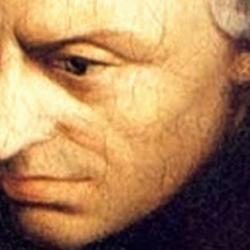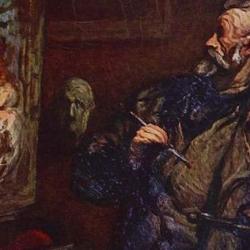Picturing the Apocalypse by Natasha and Anthony O’Hear is a wide-ranging study of artistic depictions of the book of Revelation. The introduction is a brief but well-informed survey of the interpretation and use of the apocalypse. Each chapter focuses on one portion or image of the apocalypse – the Lamb, the four horseman, the whore of Babylon, the new Jerusalem – and, after a summary and brief analysis of the biblical text, examines artists’ renderings from middle ages through the present.
Inevitably for a work of such breadth, some of the summaries turn into annotated lists. Inevitably too, one can find favorite’s that are left out (Bergman’s there, but not Fritz Lang’s Metropolis; no reference to Mako Fujimura’s apocalypse-inspired paintings). It’s a rich, compendious achievement, introducing the obvious (Durer, Blake) and some less well known works.
Throughout the volume, the authors describe and reproduce parts of the Angers tapestry. It is “130 m in length, 4.5 m in height, and comprising over eighty-four individual scenes of the text. Is was produced for Louis 1st of Anjou (and brother of the French king) between 1377 and 1382. . . . Like medieval Apocalypse manuscripts, the large number of images available to the designer meant that many textual details could be pictorialized in a leisurely and detailed way but here, of course, on a much grander scale. Walking through the galleries in Angers, in which the tapestry is now housed, is like walking through Revelation itself, in the presence of John himself, whose reactions and emotions are forcefully represented in every panel and who himself seems to be participating in a journey from incomprehension and fear to enlightenment” (33). The only thing better than their descriptions would be a guided stroll through the gallery.
Most of the book focuses on visual arts, mostly two-dimensional – paintings, drawings, woodcuts, tapestries and the like. Movies are referenced, as is music like Vaughan Williams’s Sancta Civitas (251-2) and Franz Schmitz’s Das Buch mit Sieben Siegeln (251-7).
Messiaen’s Quatuor pour la fin du temps (Quartet for the End of Time) is a meditation on Revelation 10:6, which Messiaen took to mean “time shall be no more.” The O’Hares observe, “One might ask how the ending of time and the onset of the timeless, the post-temporal, and the eternal can be conveyed in a medium such as music, whose very essence involves the beating and counting of time, and whose most acclaimed works quite clearly move logically and emotionally from beginning to end, through carefully measured stages and climaxes.” Messiaen achieves this feat by writing a piece in which “there is virtually no movement forward, or at least what movement there is leads us to stillness. In the two stillest of the work’s eight movements the piano does in a sense beat time, but slowly, slowly, in a way to still time, as the cello and the violin, respectively, powerfully and gently unfold endless melodies reaching, in the words of the composer himself, a ‘tender and supreme distance.’ . . . Stillness is at the beginning and the end, and also at the heart of a work which, rather than involving linear development, is . . . akin to a window through which the reality beyond time is glimpsed” (257-8).
Picturing the Apocalypse is a lovely and informative collection of such windows.











